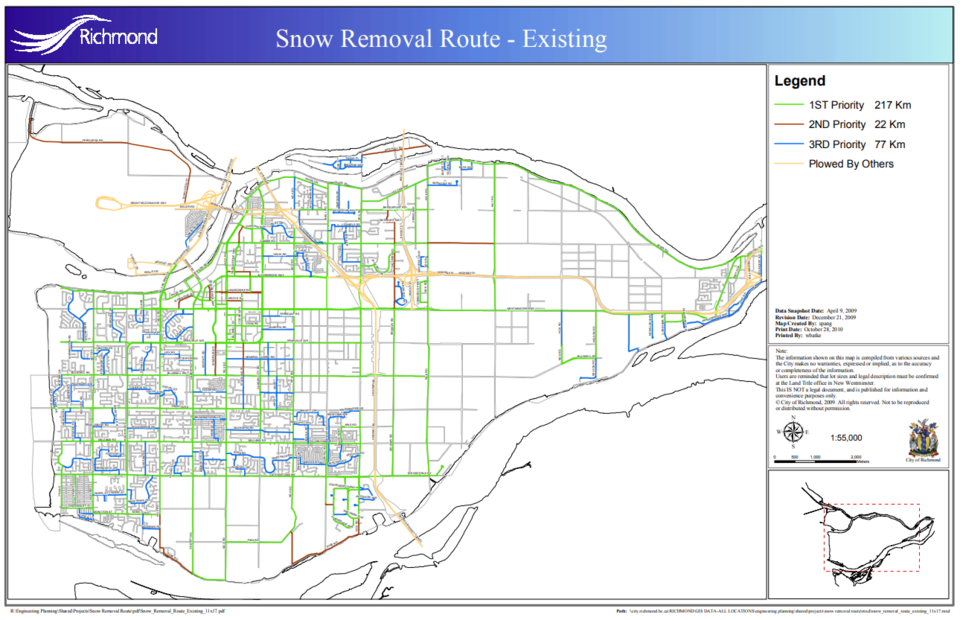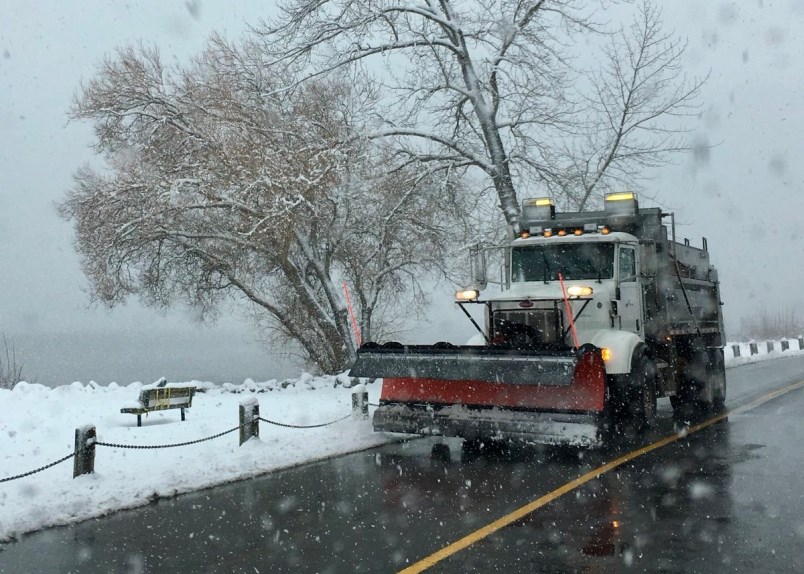Despite many commuters passing through more than one municipality, even in winter weather, Richmond Mayor Malcolm Brodie said he thinks it’s best for cities to look after their own snow clearing.
In an interview with CBC, former Vancouver councillor George Affleck said he believes Metro Vancouver’s major arterial routes should be taken care of at a regional level, such as through a partnership with TransLink.
But Brodie told the Richmond News that a regional approach to snow clearing may mean that areas with large hills get the most attention, which means that other areas, such as secondary roads or connector roads, which connect local streets to arterial roads, would suffer as a result.
“I think it’s a mistake to say that if we have a regional approach to snow clearing, then we have better snow clearing,” said Brodie.
“I think it’s up to each individual city to make sure that they have set their own priorities and clear the roads according to whatever priorities they have set.”
Brodie added that a city setting its own priorities “would be no worse, and possibly significantly better than if we went with a regional approach.”
Most cities, he said, prioritize major arterials and bus routes.
As winter weather hit the Lower Mainland this week, and heavy snowfall affected the morning rush hour across Richmond and Metro Vancouver Wednesday morning, many commuters faced uncleared, snowed-covered roads and lengthy transit delays.

Clearing major arterial routes takes priority during snowfall, according to the city, which makes sure the routes are clear for emergency vehicles, public transit and private vehicles.
Then come secondary and third priority routes, for example, Lansdowne and Dyke roads, and Chatterton and Woodwards roads.
Snow removal on highways is the provincial government’s responsibility.
According to Brodie, Richmond is aware days ahead of incoming snow events and possible weather changes, and plans accordingly, with city staff monitoring the weather by the hour.
During the latest snowfall, thirteen trucks, plus pick-ups with plows have been moving snow and laying salt and brine to keep the ice at bay, according to a city spokesperson, although it has been challenging as the snow has been “coming as quickly as they could remove it.”
This year’s ice and snow removal budget is around $1.1 million, said the spokesperson.



